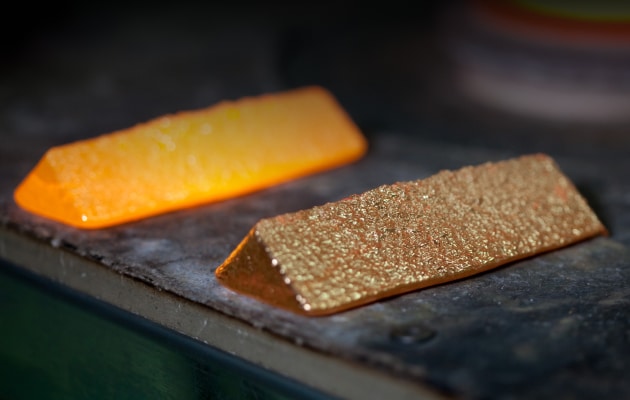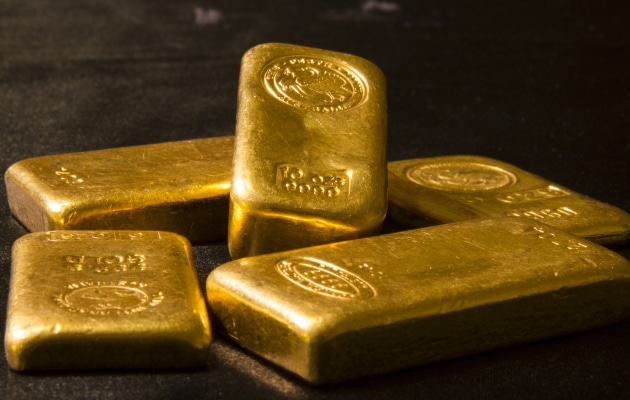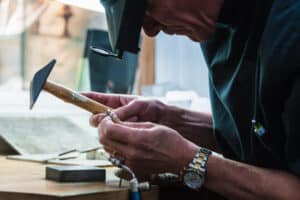All that gliterring gold
The allure of gold has fired the human imagination for centuries. When looking at the gold narrative, what strikes us, is the remoteness of the ancient examples commonly used – and we thought it was time to bring the story of gold up to date and to make it more local.
SpaceX Gold is proud to be based here in California which is where the American story of gold began. Whether you are thinking of starting a gold IRA rollover or just have an interest in gold, we hope you find this brief history as fascinating as we do.
A large part of gold’s value is tied up in its past. In how it kept it’s value across centuries, and increased its worth, thousands of times over.
The regard and awe in which gold is held is a measure of the attraction and fascination, of this amazing yellow metal.

Gold through the ages
| 3600 BC | Egyptians were the first to smelt gold. |
| 2600 BC | Hieroglyphics describe gold in Egypt |
| 1223 BC | King Tut’s golden funeral mask is created |
| 1200 BC | Egyptians invent the lost-wax technique still used today in jewelry making |
| 700 BC Silver Coins |
First silver bartering tokens invented by King Pheidon of Argos |
| 564 BC Gold Coins |
|
| 564 BC The Greeks |
|
| 56 BC The Romans |
|
| 1532 Spanish Conquistadors |
Conquistadors of Spain discovered vast troves of Inca and Aztec treasure in South America |
| 1792 | Congress enacts the Mint and Coinage Act, allowing the government to hold its reserves in the Bank of the US and establishing a fixed ratio of gold to the U.S. dollar. Gold and silver coins become legal tender. |
| 1848 | James Marshall discovered gold in The American River, near San Francisco, California |
| 1849 | 300,000 prospectors, known as the “forty-niners”, participating in the gold rush 1861 – US Treasury Secretary Salmon Chase prints the first U.S. paper currency |
| 1862 | Paper money is legal tender in the US, creating a fiat money system. Banknotes are no longer convertible into gold and silver. |
| 1879 | The government reinstates convertibility of the US dollar into gold. |
| 1900The Gold Standard Act begins and a gold reserve is established. | |
| 1913 | The Federal Reserve is established to stabilize gold and currency values |
| 1929 Great Depression |
|
| 1934 | The Gold Reserve Act prohibits private ownership of gold. |
| 1944 | During WWII and the end of the Great Depression, 44 Allied nations sign the Bretton Woods agreement and establish the gold standard. |

1971 – Gold Standard Ends
“The abandonment of the gold standard made it possible for the welfare statists to use the banking system as a means to an unlimited expansion of credit. In the absence of the gold standard, there is no way to protect savings from confiscation through inflation. There is no safe store of value. Deficit spending is simply a scheme for the hidden confiscation of wealth. Gold stands in the way of this insidious process. It stands as a protector of property rights. If one grasps this, one has no difficulty in understanding the statists’ antagonism toward the gold standard.”
~ Alan Greenspan
Our story starts with the discovery of gold deposits in Nubia. These discoveries fed the Egyptian Pharaohs and their courts with gold for jewelry, which we are still marveling at – over 3,000 years later. Taking a development of the first silver bartering tokens invented by King Pheidon of Argos around 700 BC – the Lydians , under their King Croesus then used gold to mint what we know as coins in the Middle East.
Coins could be used to buy goods and services. Portable, easily recognized, and with an exact value. They were perfect for trading. So successful was his invention, Croesus is associated with expressions describing the wealthy, even today. The Romans and Greeks improved on this system of payment, and with their hoards of coinage ran Empires, conquering a large part of the globe.
The Conquistadors of Spain then discovered vast troves of Inca and Aztec treasure in South America and transported it back to Europe by galleon in the Middle Ages. Gold was traded, stolen by pirates and thieves, and used by Governments and Kingdoms both legally and illegally, to fight regional wars and expand Empires across the world. So astonishingly valuable was the Spaniard’s stolen fortune, adventurers still scour the globe for sunken ships laden with doubloons and golden jewelry. They spend millions of dollars on speculative explorations to recover the treasure, using the most modern recovery techniques. Throughout this period, gold’s value as a basis for the wealth of nations was established.
Those with vast gold reserves were always the “players” on the world stage. It was this gold which gave them the money needed to back up their expansion across continents. In more recent times, after America was “discovered” and settled, one of the most fascinating and incredible stories in the modern era of gold happened. The outcome of this tale founded a State, a major city and more. It is also the reason you may well have a stake in the adventures and explorations of your ancestors, even today!
Back in the spring and summer of 1848 – James Marshall discovered gold in The American River at Coloma, California, just north of Sacramento. Word spread and in the fall people came flocking to the area looking to seek their fortunes. By 1849, the first of 300,000 prospectors were staking their claims and panned in the rivers and streams for the placer gold which laced rivers and streams in the hills and valleys of the Sierra Nevada. These prospectors faced hardships which are unimaginable today. They became known collectively as “forty-niners”, due to the year in which most of them struck out to search for the gold. Many died and most of those who made it through disease, sickness, starvation and crime, returned broken and worse off financially than if they had never left their homes!
At first the pickings were easy, there was surface gold all over the territory. Many of the original prospectors did strike it rich. An estimated tens of billions of dollars in today’s prices of gold was found and extracted. Once the surface gold was taken – the only way to reach further lodes and veins was not only to dig and create small mines, but also to use newly designed extraction and refining techniques. This needed more men and equipment – and more money.
San Francisco became the port for shipping the gold and for bringing in the gear to mine it. A settlement of just a few hundred people when the gold rush began, became an important hub of almost 40,000 people by 1852. This grew to 150,000 by 1870. As word of the finds became news, San Francisco became the focal point of the prospecting hordes and ships arrived from across the world. Their crews even abandoned them, to join the passengers – every one looking for gold.
As the gold became harder to find, the American prospectors became resentful of the explorers from other countries, all trying to get a piece of the action. They became violent towards them, and the California State Legislature even passed an act which charged a monthly tax on these “alien” adventurers to pacify the Americans. They were just as bad to the Native Americans. Skirmishes and violence between miners and explorers and other groups became commonplace. There were many deaths.
Just over 100 prospectors became fabulously wealthy by staking their claims and laying out their territories early. Some three thousand made “good” money. The rest broke even, or returned home worse off than they started.
Ancillary businesses, boarding houses, bars, shipping, retail, transportation and entertainment, sowed the seeds of California’s economic birth and traded with millions of dollars worth of transactions over the seven years of the gold rush. Gaming houses, saloons and brothels, often run by women along with laundry services and food, also did spectacular levels of business. “Supplies” really took off. The miners relied on goods being shipped or moved slowly overland. There was no infrastructure in place.
As the gold became harder to find so more and more equipment was needed to dig for it, shore up the diggings, transport the spoil and the ore, house and feed the miners, refine, then securely store the gold. Once processed, the gold was used as money amongst the people, to pay for everyday expenses both locally and in other countries, for goods shipped to California. The longer-term and more careful prospectors did not spend, but returned to their homes, both here and abroad, with their spoils.
The impact of the gold rush in California, America and on the wider world, cannot be overstated. Globally, one of the most interesting examples of this effect is of France. It is estimated that US$80 million of gold from California ended up there. In the years following the gold rush, this level of gain was echoed throughout other countries of the world.
The gold which stayed in California found its way to banks and clearing houses, and was made into coins and bullion. To regularize these coins, The San Francisco Mint was built, and the first official US denominated coins made from California gold were struck and circulated.
Over the years, having been verified by assay checks, much of the gold ended up in national banks and ultimately, the Bullion Depository at Fort Knox. Stored here next as bars and ingots, a little is minted today, as gold coin. It is exciting to think when buying these freshly minted American Eagles, they might be made from gold found or mined by the pioneers who took part in the great California gold rush. Sitting in your hand may be a small, yet very valuable, piece of American history!






